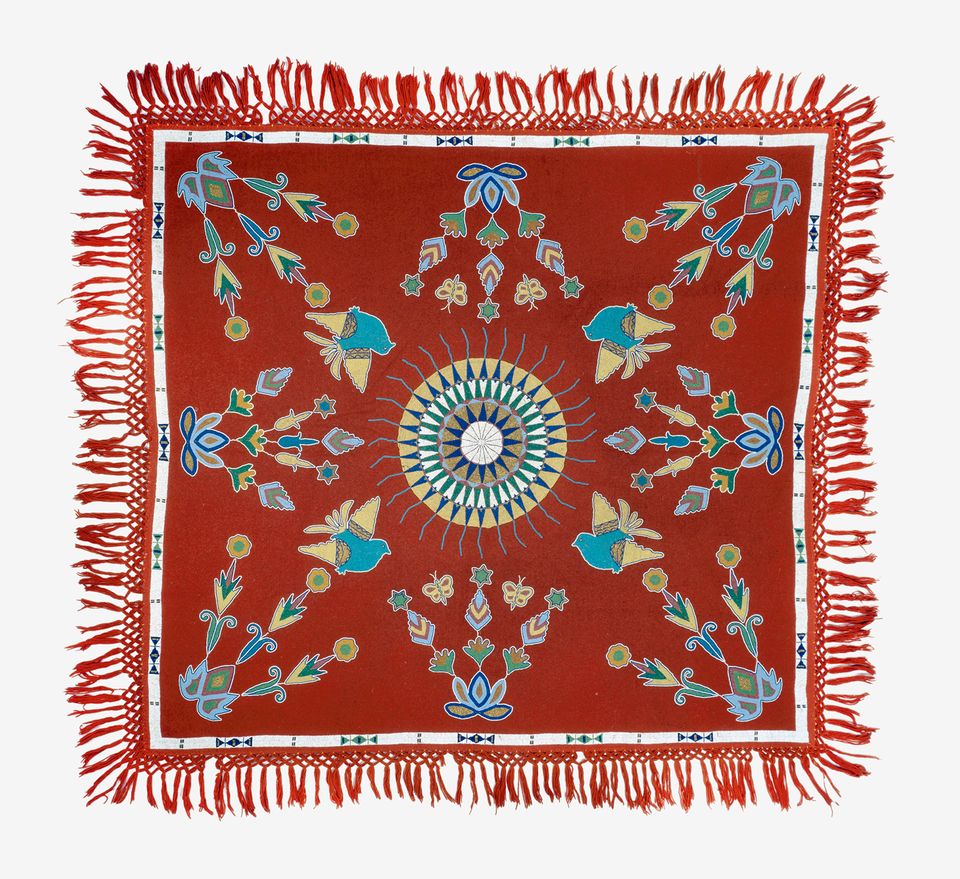
Sisíthuŋwaŋ Dakhóta artist, Tablecloth, 1900–1910, wool, glass beads, brass beads, and cotton thread, National Museum of the American Indian, Smithsonian Institution, 12/814. Photo by NMAI Photo Services
Artist’s Language
Hékta eháŋna ómakha opáwiŋğe akéšahdoğaŋ sám wikčémna šákpe sám yámni héhaŋ Dakhóta nína ótapi nažíčawičhayapi. Makhóbašpe thókeča ektá thípi káš Dakhóta wíŋyaŋ kiŋ hnáȟ wakáğapi. Táku káğapi hená wíyopheyapi ga mázaska kámnapi úŋ thiwáhe kiŋ awáwičhahdakapi. Táku káğapi Wašíčupi hená waštédakapi čha óta hená ophéthuŋpi. Ómakha 1863 ithókab Dakhóta wakáğapi óta wóhdihdeya ga yuȟáȟa úŋpi, wáhnawotapi akáȟpe kiŋ de ed wóhdihdeya ga yuȟáȟa hená éhdepi káš káğa kiŋ Victorian uŋ káğapi hená kaȟníȟ ičúpi.
English
By 1863 most Dakhóta were banished from their homeland and exiled to states bordering Minnesota. Yet Dakhóta women artists continued to create, often as a means of supporting their families as more non-Natives discovered the beauty of their art. This tablecloth’s design encompasses the delicate symmetry and floral motifs often found in pre-1863 Dakhóta work, yet the artist also chose to work with materials associated with Victorian households.













